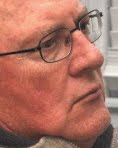
A high Q narrow band filter with gain is shown in Fig. 1. This filter can be used to filter steady state signals but it is not suitable for audio use or with signals that have frequent transient signals. Its high Q and gain will cause it to ring or be unstable with such transients. The high Q, high gain circuit is with R5 not populated. The circuit can be used with audio signals if Q and gain is reduced with the " Q spoiler" resistor R5 set to approximately 12.5K maximum. With R5 in place the Q is approximately 1.3 and the gain is approximately 22.5db at the pass frequency, in the case shown, of 2KHZ. Without R5 populated, the Q is set to 10 and the gain is approximately 40db or 100 at the pass frequency. A 0.05 volt peak 2KHZ input signal will produce a 5 volt peak output signal.
The design shown has been simulated for AC response and transient response using the LTC6244 rail-to-rail 5MHZ op-amp. Fig.1 is the actual simulation schematic.
To design the circuit, we must first decide on the pass band center frequency Fo.
Next set the Q value. Then set a practical value for C1 and C2, e.g., 0.01UFD. Next we will calculate a value called Beta which is the ratio of the center frequency in radians to the Q value. Set Fo to 2KHZ and set Q to 10.
Beta = 2 * Pi * Fo / Q
Beta = 1256.6 with an Fo of 2KHZ and a Q of 10.
In the case of the circuit shown we can now calculate the value of R4 as
R4 = 2 / ( Beta * C ) = 159.16K with C=C1=C2= 0.01UFD
The closest standard value would then be selected from the standard resistance decade table.
Also we can compute the bandwidth of the filter measured at the -3db points as
BW = Beta / ( 2 * Pi ) = Fo / Q = 200. The bandwidth for this circuit is 10% of the center frequency with Q set at 10.
It is also known for the circuit of Fig. 1 that the circuit component values are related to the center frequency as
Fo = 1 / ( 2 * Pi * ( R2||R3 * R4 )^0.5 * C )
where R2||R3 is the parallel value of R2 and R3. We can re-write the equation as
R2||R3 = 1 / ( Wo^2 * C^2 * R4 ) = 397.9
where
Wo = 2 * Pi * Fo
Assuming that R2 = R3, we can then say that R2 and R3 are 2 * (R2||R3) = 795.8 each as shown in Fig. 1. The closest standard value would be selected from the standard resistance decade table.
We have now completely designed the circuit of Fig. 1.
The performance of the circuit was verified using a SPICE circuit simulator. The center frequency was at 2KHZ. Bandwidth was 200 HZ. Gain was 40db or 100. With a 50 millivolt peak 2KHZ input signal, the output signal was 5 volts peak. AC analysis showed that symmetry was excellent.


